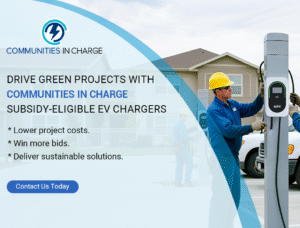
EV Charger Connectors Explained: Types, How They Work, and Standards (2025 Update)
Learn about EV charger connectors in 2025 — their types, how they work, and key standards like SAE J1772, Type 2, and CCS. Find the best fit for your EV.

Perhaps one of the biggest and most conspicuous trends in car design at the moment is a shift to hybrid and completely electric vehicles. But less obvious is the major change in the architecture of electrical systems of electric vehicles as a result of the introduction of 48v DC to complement the 12v DC systems that have been in use for many decades.
This change is so prevalent in North America than in any other region. So why are 48v DC systems more popular in these parts of the world?
Let’s dive in and learn more.
More and more electric vehicle manufacturers are starting to shift to 48v electrical systems. The potential application of the new system is exciting and it represents an enormous innovation in automotive design. But with greater technical capability, comes a greater need for power grows. Both specialist and passenger EVs can benefit from a high-voltage system without trading off size and or weight.
A viable solution is adopting a higher-voltage 48v system from traditional 12v systems. The new systems don’t require surge requirements or lighting thanks to major advancements in engineering
Here are what I believe are factors driving the adoption of the 48v systems in North America more than anywhere else.

(Source: jointcharging.com)
CO2 emission standards in North America are increasingly becoming stringent and therefore vehicle OEMs need to comply with these rules while at the same time increasing the performance of the vehicle to stay competitive.
Although the wide adoption of 48v systems does lead to increased vehicle cost, the general acceptance shows that it is a way to achieve lower CO2, enhanced vehicle drivability, and improved fuel economy.
A key driver for the popularity of 48v EV chargers such as EVC 10 NA in North America is the regulatory requirements placed on OEMs concerning Cox emissions and enhanced fuel economy.
The penalties imposed on automaker fleets that don’t meet these regulations targets are severe.

(Source: jointcharging.com)
When it comes to cost terms, anything above 60v not only flouts SELV but also becomes more expensive to execute. OEMs would need special wiring and cabling, without forgetting tighter regulations. But 48v subsystems provide more efficient energy distribution throughout, enhancing engine accessories as well as other electronics on the EV. Moreover, higher-voltage designs may also lead to improved power generation.
Additionally, the system’s battery becomes more effective. With an integer, multiple of the 12v systems, 48v enables dependable lead-acid batteries arranged in series. This means there is no need for costly batteries. Also, 48v systems have the advantage of increasing power components without the need to raise the current, thus minimizing copper, which normally requires expensive wiring and cabling as well as a loss in transmission.
48v is capable enough to handle EV components without compromising fuel-economizing strategies.
In terms of mild hybrid EVs, 48v systems are being used for power recuperation. OEMs are crafting boost recuperation machines – BRM – to supplement additional electric compressors, reducing the choice between driving efficiently and dynamically. Features include electrical torque support, brake energy recovery, smoother start/stop engine starts, and load point optimization. For example, in terms of braking, a portion of kinetic energy is recovered and stored in the 48v battery.
Moreover, 48v also takes part in electrical torque support during boosting operations. Specialist vehicles such as trucks depend on higher torque with less energy wastage. In addition to the optimized start and stop system, this is made possible due to the smaller voltage of the 4v systems, delivering up to four times more power compared to customary hybrid systems.
Smart technology within BRM is being utilized to standardize tailgating by predictive coasting systems, thus making driving specialist vehicles much safer. It was projected that by 2020, more than four million vehicles would have adopted BRM intelligent technology.

Learn about EV charger connectors in 2025 — their types, how they work, and key standards like SAE J1772, Type 2, and CCS. Find the best fit for your EV.

Formed on 2 October 2025, USESC unites over 30 leading organisations, including battery manufacturers such as Tesla, project developers such as Eolian, and utility companies and contractors. The organisation promotes the addition of energy storage to America’s power system.

Joint Tech’s EV chargers have been selected for use in the U.S. Department of Health and Human Services’ Communities in Charge program.